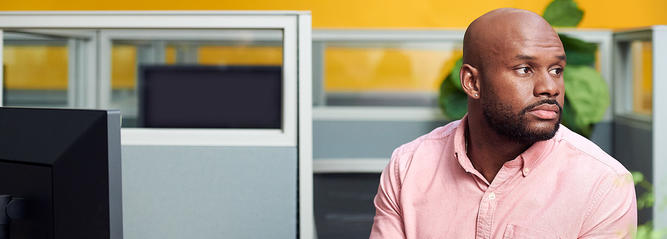Hyperglycemia vs. Hypoglycemia: What they are, and what you can do about them.
Learn about the symptoms, causes, and treatments for hyperglycemia and hypoglycemia.
Learn about the symptoms, causes, and treatments for hyperglycemia and hypoglycemia.

Table of contents
Simply put, hyperglycemia is high blood sugar. It’s blood glucose higher than 180 mg/dL 2 hours after you eat, or higher than 130 mg/dL if you haven’t eaten for 8 hours or more.
Hyperglycemia happens when you have low insulin, or when your body can’t use insulin properly.
The easiest way to tell if you have hyperglycemia is through regular blood glucose testing. If you’re out of range because your blood sugar is high, you’re experiencing hyperglycemia.
But even without checking your sugar, there are some telltale signs that your blood glucose is high.
One sign is that you find yourself going to the bathroom more frequently to urinate. Your kidneys are supposed to filter glucose as it goes through your body, but they can’t always keep up if you have high blood sugar. Your kidneys will try to cope with the excess glucose by making you urinate more.
When your body gets rid of liquid, it needs to take in liquid, too. You’ll notice yourself getting very thirsty as your body tries to compensate for the more frequent urination. You might get headaches and blurry vision, too.
If you have type 1 diabetes, fighting off high blood sugar can be as easy as injecting more insulin.
Meals and exercise can have a big impact on your blood sugar, whether you have type 1 or type 2 diabetes. If you ate too much for a meal or you didn’t exercise enough, your blood sugar may spike to high levels.
Having high blood sugar every once in a while isn’t a major cause for concern. If you notice your blood sugar is high on a regular basis, that’s when you may want to talk to a doctor.
With your doctor, you can take a look at the lifestyle factors that might be contributing to your blood sugar regularly rising to high levels. A change in diet could be in order. Carbohydrates are the usual suspects, but fatty foods can play a role in high blood sugar, too. Cutting back on those foods, or eating less in general, can help.
A sedentary lifestyle can also put you at higher risk for high blood sugar. Getting more exercise helps your body use insulin efficiently, so you can bring your blood glucose back in range.
Hypoglycemia is another term for low blood sugar or blood glucose lower than 70 mg/dL.
Very low blood sugar is a serious medical condition. You might hear this referred to as insulin shock or diabetic shock.
One of the most difficult things to do as someone with diabetes is learning to tell when your blood sugar is low. Low blood sugar carries a number of symptoms, and it can feel different from person to person.
Here are just some of the symptoms you might feel if you have hypoglycemia:
If you start feeling severe symptoms of low blood sugar, get medical help immediately.
If your symptoms of low blood sugar are mild, you can use the 15-15 rule. This is one of the most common ways for people with diabetes to safely get their blood sugar back up into range.
Simply eat 15 grams of carbohydrates, wait 15 minutes then test your sugar to see if you’re back in range. Repeat those steps if your sugar is still low. Here are some simple foods and drinks that contain 15 grams of fast-acting sugar:
Once you’re back in range, have a small snack if you’re more than an hour out from mealtime. Reach for a starch and a protein, like peanut butter and crackers, to tide you over until your next full meal.
The easiest way to keep low blood sugar in check is to make sure you don’t skip meals. Sticking to a regular eating schedule helps your body properly balance insulin and blood sugar.
Whether your blood sugar is high or low, you should feel empowered to get back into range. With regular testing, you can stay on top of your blood glucose and avoid hyperglycemia and hypoglycemia.
Sign up for Accu-Chek news and offers
Get emails sent directly to your inbox with the latest updates and deals on Accu-Chek products.
1“Hyperglycemia (High Blood Glucose).” American Diabetes Association, https://www.diabetes.org/diabetes/medication-management/blood-glucose-testing-and-control/hyperglycemia. Accessed September 14, 2020.
2“Hypoglycemia (Low Blood Glucose).” American Diabetes Association, https://www.diabetes.org/diabetes/medication-management/blood-glucose-testing-and-control/hypoglycemia. Accessed September 14, 2020.
3Geer, Katie Kerns. “11 Everyday Things That Spike Blood Sugar.” Everyday Health, 1 Sept. 2015, https://www.everydayhealth.com/hs/type-2-diabetes-care/everyday-things-spike-blood-sugar-pictures/. Accessed September 14, 2020.
4Story, Colleen M., and Renata Ilitsky. “Warning Signs and Treatment Options for Insulin Shock.” Healthline, 5 June 2020, https://www.healthline.com/health/diabetes/insulin-shock. Medically reviewed by Marina Basina, M.D. Accessed September 14, 2020.
5“Treating Hypoglycemia.” Diabetes Self-Management, 2 Aug. 2016, https://www.diabetesselfmanagement.com/managing-diabetes/treatment-approaches/understanding-insulin/treating-hypoglycemia/. Accessed September 14, 2020.
Accu-Chek Newsletter
Get diabetes management tips and news delivered right to your inbox.